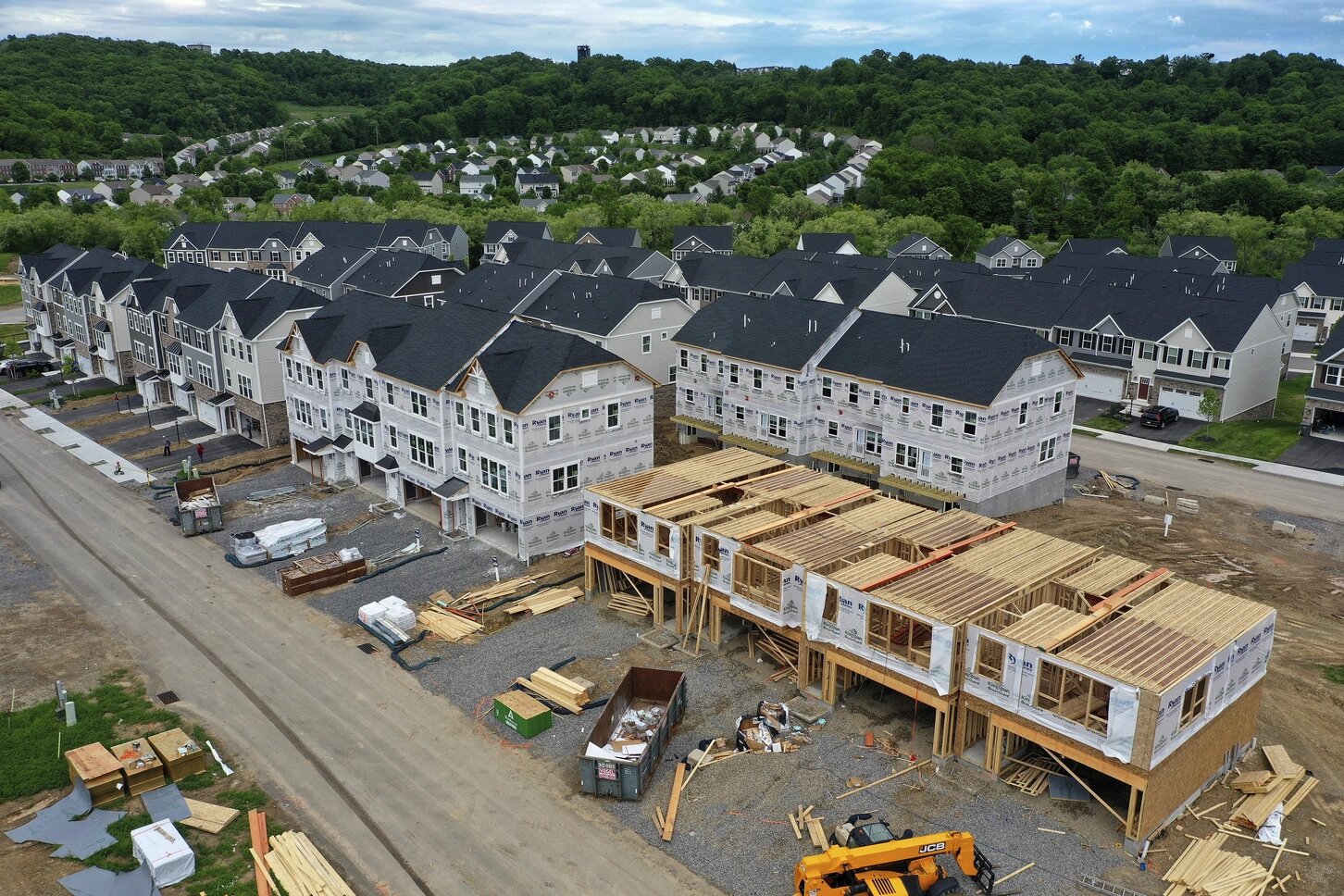The policy has had industry interest for years, but recent Trump posts may add momentum.

Homebuilders are using President Donald Trump’s growing calls for government-controlled Fannie Mae and Freddie Mac to get house construction “going” to push a controversial proposal: getting the mortgage giants to back construction loans.
The industry’s long-desired policy would create a secondary market where certain construction loans, which homebuilders procure to start new housing projects, could be packaged and sold. The move, similar to what Fannie and Freddie already do with home mortgages, could similarly add liquidity to the construction finance market and make lenders comfortable offering more and larger construction loans, which supporters say could spur homebuilding.
We brought it to the [Federal Housing Finance Agency] director’s attention earlier this year,” said Jim Tobin, president of the National Association of Home Builders, in an interview. “I know he’s looking at it and what role it can play.”
His group has pitched the proposal as a way to expand the housing supply and bring prices down, addressing an affordable housing crisis that Trump has repeatedly drawn attention to. Supporters argue it’s one of the limited options that the federal government has to address housing affordability. But the move would expand Fannie and Freddie’s portfolio to a broader and riskier world of financing and has drawn criticism from some industry experts that it could destabilize the enterprises, which have become pillars of the national economy.
Fannie already supports some construction-to-permanent loans, which combine financing for building a new home with a long-term mortgage, but homebuilders are encouraging the enterprises to look at “acquisition, development and construction” loans, which cover costs starting at purchasing a lot through the building process.
Fannie and Freddie don’t offer loans directly to potential home buyers; instead they purchase mortgages from lenders to package and sell on the secondary market. This frees up resources for lenders to issue new mortgages.
Trump, in recent weeks, pitted himself against homebuilders, accusing them without specific proof of sitting on buildable land and taking money from the government mortgage giants. But Federal Housing Director Bill Pulte shared he was scheduling meetings with top homebuilders to hear their thoughts on policy solutions to increasing supply.
Industry representatives have taken the opportunity in recent weeks to try and convince top officials in the White House and FHFA that a secondary construction loan market could help move the needle.
FHFA did not respond to requests for comment.
Proponents argue it has become too difficult for homebuilders to raise enough financing to cover large construction costs. They say the federal government’s involvement could unlock the investor confidence needed for a large-scale secondary market where lenders can unload their balance sheets and free up liquidity to offer more and bigger loans.
But some industry experts are skeptical.
“While it would be helpful to homebuilders for Fannie and Freddie to provide lower cost [acquisition, development and construction] financing, I don’t think that would change the amount of construction much,” housing industry analyst John Burns told POLITICO, adding that that type of financing is already widely available from banks.
Ed Pinto, co-director of the Housing Center at the American Enterprise Institute, warned that Fannie and Freddie are seriously unprepared for the level of risk associated with these construction loans.
“Once you’ve been to construction lending, it’s a very different world in terms of risk you’ve got. What happens if the contractor goes belly up? What happens if the homes don’t sell?” Pinto said in an interview. The enterprises “haven’t proven to be adept at that.”
Underestimating the risk involved could have devastating consequences.
Fannie and Freddie “took on higher risk loans in the run up to the great financial crisis,” Pinto added. “These things run awry.”
Sen. Mike Rounds (R-S.D.), who chairs the subcommittee that oversees Fannie and Freddie, said that he “hasn’t heard” what policies Trump is considering to boost homebuilding and that it hadn’t come up in his most recent meeting with the president.
But there are indications that a proposal like this from the administration might find allies across the aisle.
In an August letter to Pulte, Democratic Sens. Chuck Schumer (N.Y.), Elizabeth Warren (Mass.) and Cory Booker (N.J.) signaled interest in expanding Fannie and Freddie’s purchasing power to construction loans, highlighting the potential to support federally subsidized and mixed-income building and rehabilitation.
“FHFA should explore ways that the Enterprises can support liquidity for multifamily construction,” the Democrats’ letter reads, although acknowledging, “some research has indicated that higher losses are associated with construction lending.”
Legislators and industry members insist that home affordability isn’t a partisan issue. Earlier this month the Senate passed a wide-ranging bipartisan bill to boost the housing supply.
Still, any proposal on these lines will likely face pushback from those weary of expanding the government further into private markets — especially as the administration considers moving to privatizing Fannie and Freddie. Pulte shared that the president is considering a public offering of the enterprises’ shares “as early as late 2025” or the beginning of 2026.
The Federal Housing Finance Authority is now collecting input on its recently released strategic plan, which calls for exploring opportunities for how Fannie and Freddie can boost homebuilding.
